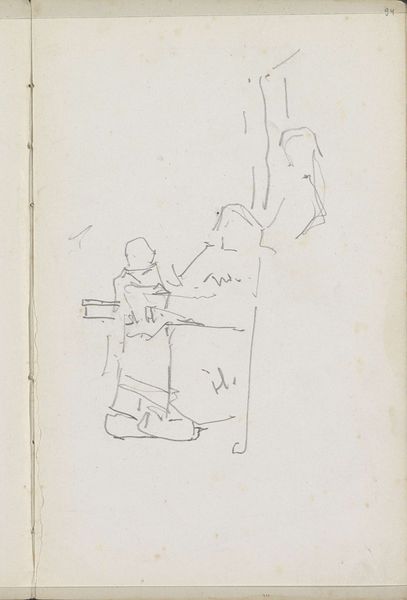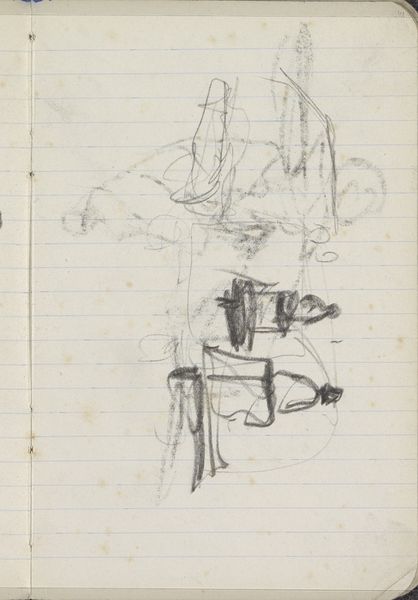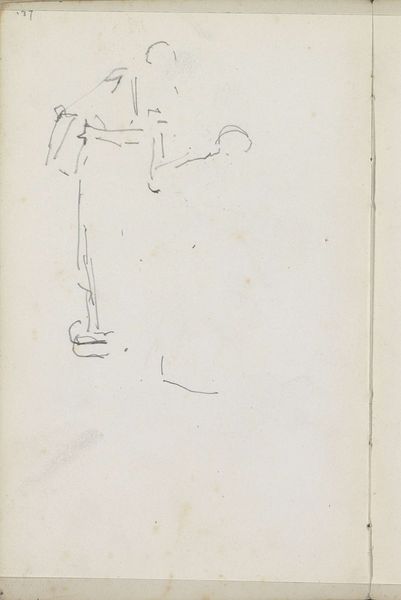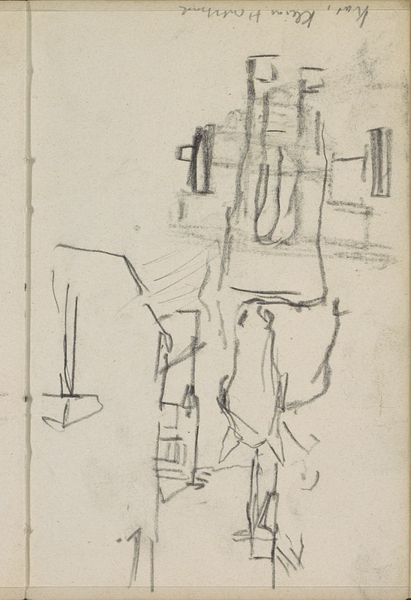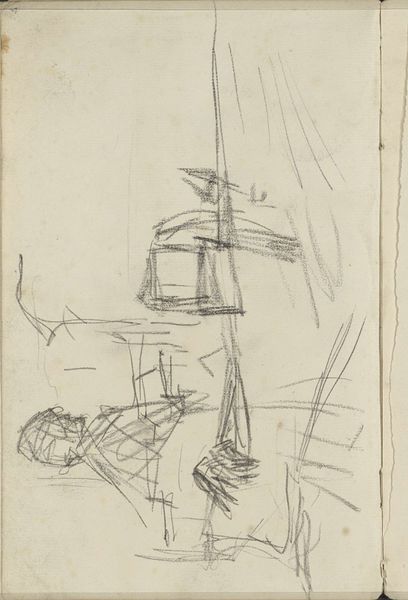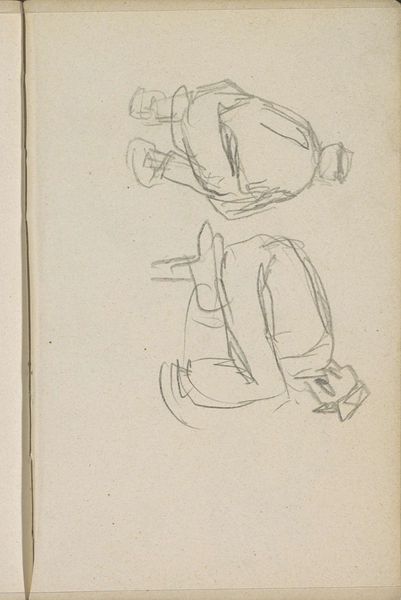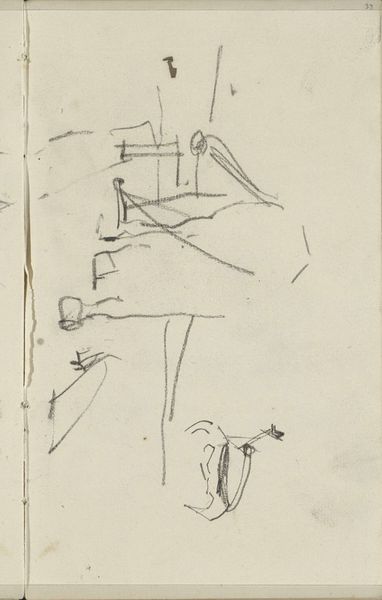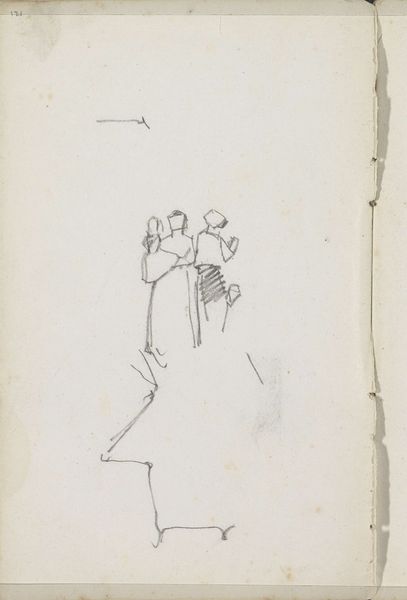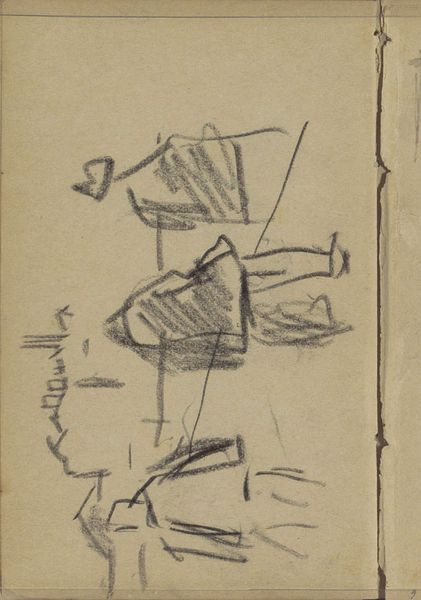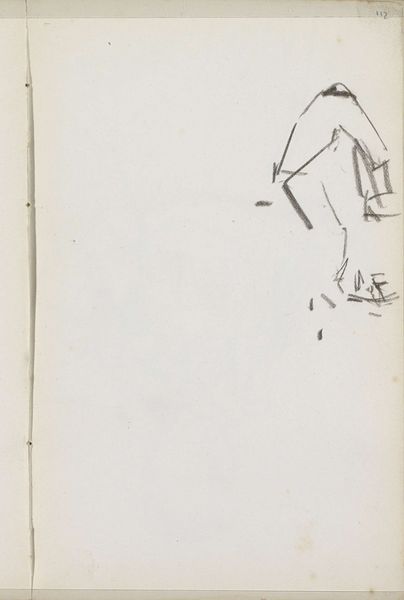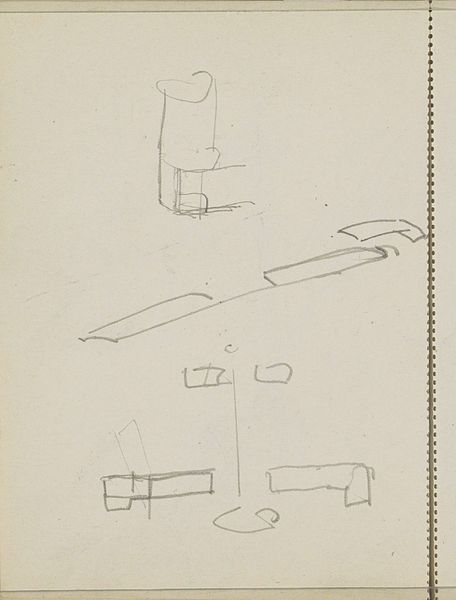
Copyright: Rijks Museum: Open Domain
Editor: Here we have George Hendrik Breitner’s "Paard-en-wagen," a pencil drawing from 1917, currently residing in the Rijksmuseum. It's a quick sketch, almost an impression, of what I assume is a horse and carriage. What can you tell me about this drawing? Curator: Well, consider the context. Breitner was known for documenting Amsterdam life, and this sketch is likely a raw, immediate capture of the city’s transportation network at the time. How does the use of pencil, a readily available and relatively inexpensive material, inform our understanding of the artwork's function within Breitner’s practice? Is it a finished product or a preparatory study? Editor: I guess I assumed it was just a quick idea, but your question makes me realize that the sketch might also be highlighting how common horses and carriages were as tools for transport. That makes me consider the labor that goes into making those modes of transportation viable, whether the coachbuilder or the caretakers. Curator: Precisely. The drawing’s rapid execution doesn't diminish its value. In fact, it provides insight into the artist's process. Can we understand Breitner's artistic approach through examining how he uses readily available materials like pencil and paper to explore his surroundings? Editor: That's fascinating! Looking at it this way, it is also tempting to view these horses in dialogue with how other technological systems such as the trains that appear elsewhere in Breitner’s output function. The pencil seems very crucial, then, to expressing how raw the experience of industrialisation was to ordinary workers, perhaps. Curator: Indeed. The very act of sketching – the repetitive gesture, the manual labor involved – mirrors the everyday lives of the working class he often depicted. Editor: I never considered the connection between artistic process and the lives being depicted. I appreciate you shedding light on that. Curator: It highlights the intrinsic link between the materiality of art and its social context. I find that exciting to discover, too.
Comments
No comments
Be the first to comment and join the conversation on the ultimate creative platform.
